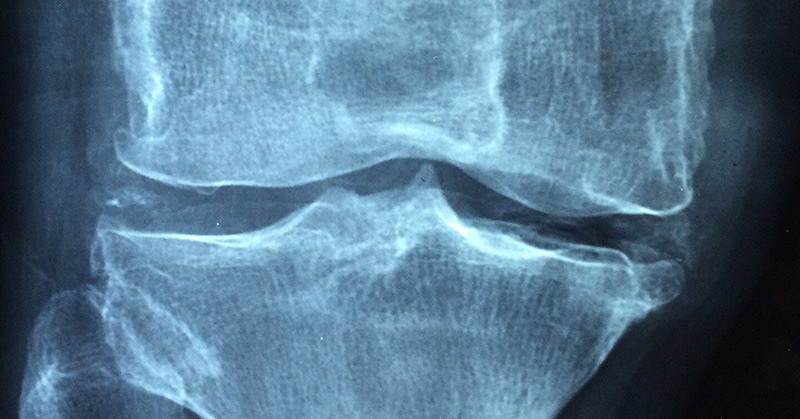A new study from the Queen Mary University of London shows that exercise actually helps prevent the deterioration of cartilage caused by arthritis [1].
The research apparently shows that the forces cells in your joints experience during exercise suppress inflammatory molecules that can cause arthritis, and even help prevent the deterioration of the cartilage itself.
The study shows how exercise benefits joint tissue, even down to tiny cell structures called primary cilia on living cells. We’ll see more about how exercise specifically benefits primary cilia to potentially help arthritis in a moment [2].
Of course, exercise has long been touted as being beneficial for our bodies, but once again science has shown just how much exercise can impact our future health, especially when it comes to arthritis.
How Arthritis Happens
There are actually more than 100 different types of arthritis (to name a few: rheumatoid arthritis, osteoarthritis, and gout). It’s the leading cause of disability in the United States, with more than 50 million adults having some type of arthritis [3].
Arthritis in general essentially refers to joint inflammation. The exact cause of arthritis isn’t known, although genetic factors and lifestyle factors are suspected to play a role, similarly to most medical conditions [4].
Inflammation is one of the ways the body responds to an injury. In arthritis, a joint—or the cartilage in the joint—becomes damaged, which can cause swelling, stillness, pain, and limited movement of the joint. Arthritis can hinder daily living activities including walking, getting dressed, and bathing [5].
How Exactly Does Exercise Help Cartilage?
Exercise compresses joint cartilage such as that found in your knees and hips, but in a good way—cells in the cartilage know they’re being compressed, and they respond by inhibiting inflammatory compounds commonly linked to painful conditions such as arthritis.
But why does this happen?
The new research shows that physical activity that suppresses inflammation is the result of the activation of a protein called HDAC6. HDAC6 subsequently causes the proteins that make up the primary cilia to change.
Primary cilia are extremely tiny—only 1-10 micrometers in length [6]. Changes in the primary cilia provide a way for researchers to measure inflammation in the body. Cilia get longer when inflammation is present, but with activation of the HDAC6’s protein, elongation was prevented, essentially suppressing inflammation.
HDAC6 is commonly thrown off by pharmaceutical drugs, which block HDAC6’s activation to prevent its anti-inflammatory effects on the body which could be helpful to many patients experiencing arthritis pain.
The authors of the study hope that this new information will help people suffering from arthritis and bring new treatments to light. The results of the study could even lead to medicine that one day mimics the effect of the mechanical forces in exercise to prevent painful inflammation.
Of course, a little preventative exercise could go a long ways towards protecting your body from getting arthritis in the first place, although there’s no conclusive evidence to date showing that exercise can actually prevent arthritis.
Types of Exercise That May Help Reduce Your Risk for Arthritis
However, exercise can still play an important role in not just reducing your risk for arthritis, but managing arthritis pain as well. It’s important to maintain the mobility of your joints, but similarly, too much exercise or overuse of specific joints can actually be a contributing cause to arthritis.
In reality, any type of exercise has the potential to reduce your risk for arthritis and manage your arthritis pain if you already have arthritis. Regular exercise can help support and strengthen the muscles that allow your joints to work, provide a natural form of pain management, and improve your mobility [7].
Exercises you may choose to do include:
- Walking
- Biking
- Swimming
- Jogging
- Water exercises
- Weight training
Regular exercise seems to be the key—aim to get some type of physical activity every day to help reduce your risk for arthritis and manage your pain!
Other Research That Shows the Benefits of Exercise for Arthritis
Of course, this new research isn’t the only one of its kind—other research exists that highlights the benefits of physical activity for patients with arthritis.
Research shows exercise training—especially resistance (think weights) and aerobic (think running or walking) exercises— for patients with rheumatoid arthritis can reduce muscle weakness, which is a common side effect of arthritis, and improve joint function [8].
Another study shows that people with knee osteoarthritis had improvements in physical performance and pain from participating in aerobic or resistance exercise programs, and the study’s authors suggest exercise “be prescribed as part of the treatment for knee osteoarthritis” [9].
Other research notes that better muscle strength and endurance such as that generated by regular exercise may protect against cartilage loss, especially in women, who tend to get arthritis at a higher rate than men do [10].
Moderate weight loss, when applicable, and moderate exercise showed improvements in function and pain in older overweight and obese adults with knee osteoarthritis in yet another study [11].
If you’re worried that you’re unable to maintain a specific type of exercise such as weight training or swimming, consider that even basic walking has been shown to help reduce pain from knee osteoarthritis [12]!
Conclusion
Although we’re a ways off from proving that exercise can actually prevent arthritis, this new research underscores the role physical activity plays in keeping our bodies healthy, including our joint cartilage.
Whether you’re at risk for arthritis or want to better manage your arthritis pain, it’s hard to ignore the evidence that moderate exercise can help. So whether you’ll be swimming a few laps or talking a walk down the street, keep it moving!
Sources
- https://www.oarsijournal.com/article/S1063-4584(19)30902-1/fulltext
- https://www.sciencedirect.com/topics/neuroscience/primary-cilia
- https://www.arthritis.org/about-arthritis/understanding-arthritis/what-is-arthritis.php
- https://www.orthop.washington.edu/patient-care/articles/arthritis/frequently-asked-questions-about-arthritis.html
- https://my.clevelandclinic.org/health/diseases/12061-arthritis
- https://ciliopathyalliance.org/cilia
- https://www.arthritis.org/living-with-arthritis/exercise/benefits/exercise-knee-osteoarthritis.php
- https://www.ncbi.nlm.nih.gov/pmc/articles/PMC3042669/
- https://www.ncbi.nlm.nih.gov/pubmed/8980206
- https://www.ncbi.nlm.nih.gov/pubmed/17473768
- https://www.ncbi.nlm.nih.gov/pubmed/15146420
- https://www.ncbi.nlm.nih.gov/pubmed/15769914
- https://medicalxpress.com/news/2019-03-cartilage-arthritis.html

